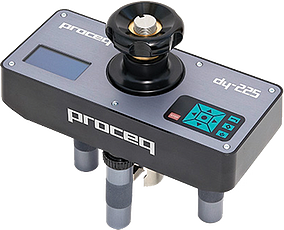
HC-2985.XX
Pull-off Tester, DY-2
The DY-2 provides a complete record of the pull-off test, as carried out in accordance with applicable standards
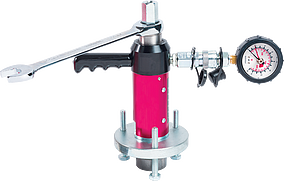
HC-2988A
Bond Test Kit with 25kN Gauge
Accurately test bonding strengths of a wide and varied range of materials

HC-2957U
Anchor Test Kit with 25kN Gauge, UNC Thread
This Anchor Test Kit is designed for testing fixings, fasteners and anchors with UNC threads
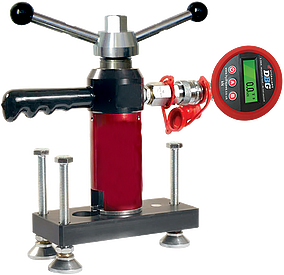
HC-2957DU
Anchor Test Kit with 25kN Digital Gauge, UNC Thread
The Anchor Test Kit is designed for testing fixings, fasteners and anchors with UNC threads

HC-2957DM
Anchor Test Kit with 25kN Digital Gauge, Metric Thread
The Anchor Test Kit is designed for testing fixings, fasteners and anchors with Metric threads
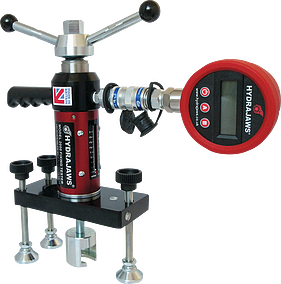
HC-2957DU.XX
Bond and Anchor Test Kits with Digital Gauge
The use of digital gauges provides many advantages including improved accuracy of ± 0.5% full-scale deflection (the analog gauge has an accuracy of ± 2%).

HC-2960M.XX
Medium-Duty Anchor Test Kit with 50kN Gauge
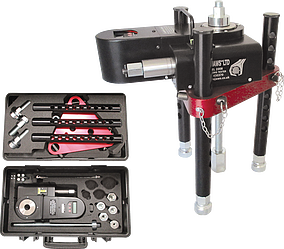
HC-2959.XX
Heavy-Duty Tester Kit — 145kN Digital Gauge
Anchor Test Kit with digital gauge is designed for testing fixings, fasteners and anchors.
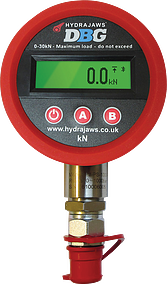
HC-2988.8
Analog Gauges for Anchor Test
Supplemental and replacement gauge for Bond and Anchor Tests

HC-2957DG.XX
Digital Gauges w/ Hydraulic Male Coupler
These digital gauges provide many advantages over the standard analog gauges including accurate and clear results.
Bond Strength and Anchor Testing
Bond Strength and Pull-Off Testing
Bond strength and pull-off testing refer to a test method outlined in ASTM C1583 and D4541. This type of testing is used to evaluate and provide a qualitative value of coatings applied to a concrete or other substrate surface. The test result provides a quantifiable value that conveys the amount of force needed to separate the coating from the substrate. Pull-off and bond strength testing provides a popular method of testing both the adequacy of a coating’s adhesion, as well as its point of failure. In order to test the pull-off strength of a coating on concrete, the technician would use one of the variety of pull-off testers supplied by Humboldt, such as HC-2985-Proceq DY-2 Pull-off Tester or our HC-2988A-Bond Test Kit with 25kN Gauge.
The bonding strengths of a wide and varied range of materials including concrete, screeds, repair mortars, epoxy resin coatings, laminates, plastics, paints and enamels may be accurately determined using this Bond Tester. Adequate direct tensile strength or bonding strength between two layers is important if repairs to concrete structures or additional overlays and screeding on existing concrete is to be structurally sound. The pull-off test as a means of projecting the compressive strength of concrete and other materials involves bonding a circular steel disk to the surface by means of an epoxy resin adhesive. A controlled tensile force is then applied to the disk, and as the strength of the bond becomes greater than that of the material under stress it will eventually fail in tension. From the area of the disk and the force applied at failure it is possible to calculate a nominal tensile strength for the material.
In general practice, a disk (dolly) is bonded to a prepared testing surface, this is allowed to cure and a partial core is cut around the disk into the substrate. The pull-off tester is then attached to the disk and a pulling pressure is applied to the disk. By initiating the pressure source, pressure is slowly increased to the actuator within the system. When the pressure in the actuator becomes greater than the bond strength between the coating and the substrate, separation will occur and the actuator-dolly assembly will lift the coating from the substrate. The maximum pressure indicator of the system’s pressure gauge provides a direct reading of the pressure at which the pull-off occurred. This measured pull-off force provides a direct indication of the strength of adhesion between the coating and the substrate. This test can also be run as a quality-control test where a desired, predetermined force is applied to the disk in order to see if the coating can withstand the applied force, which provides an accurate pass/fail evaluation according to industry standards.
Anchor Pull-Out Testing
Humboldt supplies a range of portable testers for testing the crucial holding force of anchors and fixings in construction materials. These anchor testers can be used to measure the performance of the anchor installation, and verify that it will resist specific pull-out forces in the lab or onsite. Anchor Pull-Out Testing can be used as a quality control measure in the lab or onsite. When evaluating an anchoring system in the lab, the anchor should be mounted in the same manner and method, and in the same material it is envisioned or projected to be used in a construction project.
Onsite anchor pull-out testing is usually required for two distinct purposes: to determine the suitability of an anchor fixing and to determine the allowable resistance of the anchor to pull-out failure, or to validate the quality of the installation of anchors in a particular application.
To perform an anchor pull-out test, the anchor tester is fitted with a compatible stud adapter, which is connected to the anchor device. The anchor tester then applies a load with the use of a mechanical screw arrangement acting through a hydraulic load cell, which measures the load directly applied to the anchor.
Humboldt provides an extensive selection of Anchor Pull-Out testers with pulling capabilities from 5kN to 145kN. An array of different bridge sizes and heights are also available. Our standard-duty anchor testers HC-2957DU Anchor Test Kit with 25kN Gauge available with a 25kN analog gauge as standard, but can be upgraded to a digital gauge. A medium-duty test kit HC-2960 Medium-Duty Anchor Test Kit with 50kN Gauge is available with many accessories to tailor it to almost any application.
We also offer a heavy-duty anchor tester, HC-2959-Heavy-Duty Tester Kit – 50kN. This anchor tester can handle applications up to 145kN.
Analog and digital replacement gauges, as well as an extensive offering of test adapters, extension legs and bond disks can be found here, as well.

